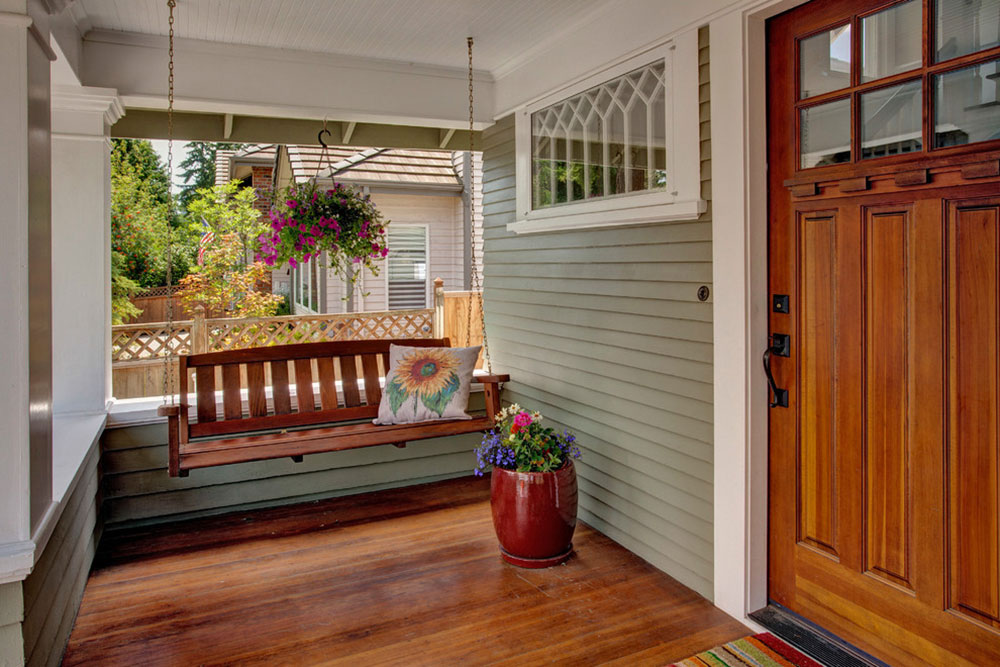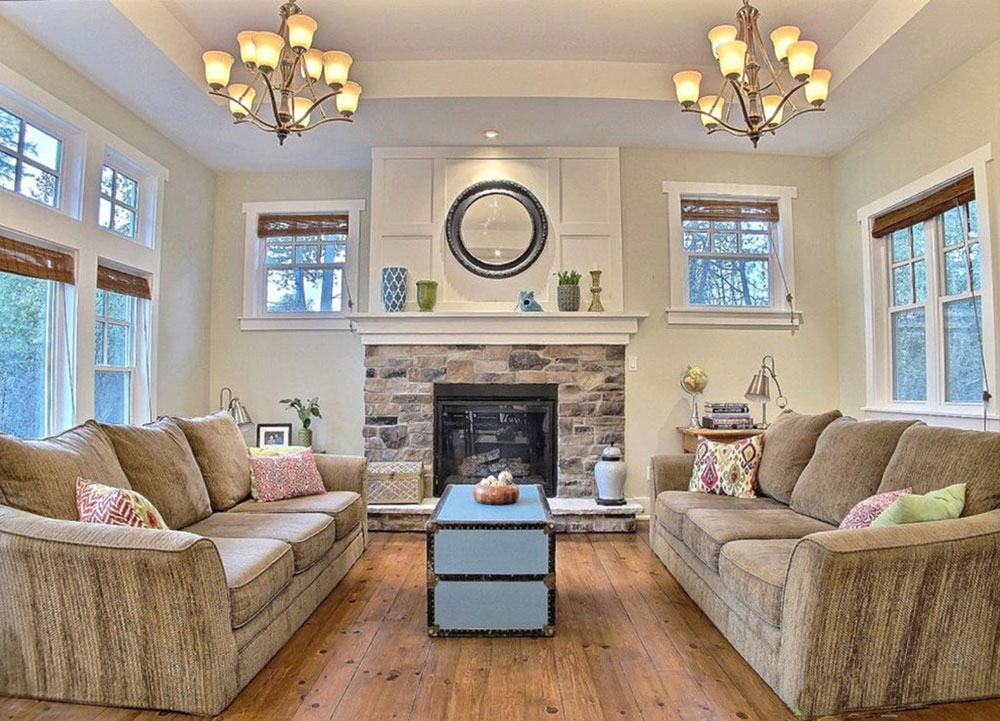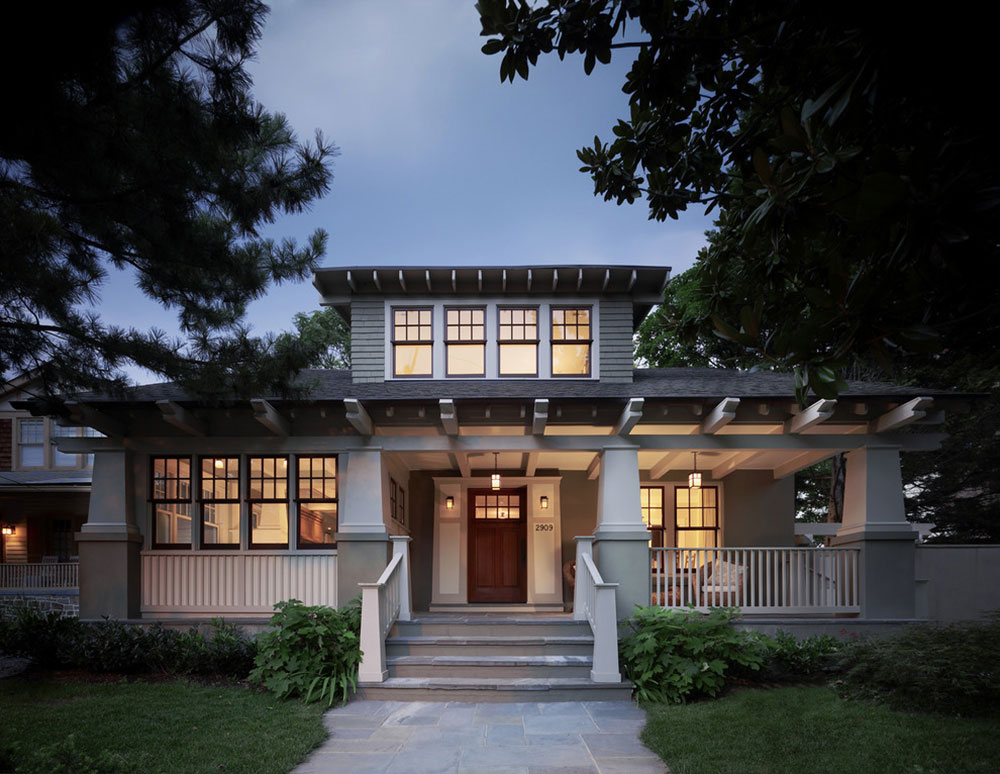Advertisement
House shopping is always a sentimental affair where the house defines a sense of the character of those living in it. A craftsman house gives you that sense of belonging even before one starts to live in it.
A folk style décor or medieval design house is the essence of craftsman work. They take pleasure in their work and the same is reflected in the homes which creates an instant connection with the house even before one begins to live there. The house seems very welcoming with much warmth alluding one to feel at home.
Craftsman houses have a long history behind them which we will explore further to give you a perspective about the advent of this architecture and how it shaped many dream houses.
A comprehensive study of its unique features and social design principles which emerged during the industrial revolution in the mid-19th century.
The Arts and Crafts Movement

Image source: Bungalow Company
The origin of Craftsman house emerged during the industrial revolution in Britain when the arts and crafts movement began against the machinery work which was perceived as a decline in the standards of Craftsmanship. This anti-industrial, economic and social reform promoted simple, medieval or folk style decorations.
Designer William Morris was a great influence on the Arts and Crafts movement in the 1850s, who frequently experimented with crafts and interior designs.
His notable works mostly included a strong presence of flora and fauna in decorative objects and furniture. He criticized machinery and believed in the idea of craftsman working by hand. He believed that craftsmen take pleasure in their work and hence could create a masterpiece, which reflected the greatness in the art of common people.
The trend soon flourished and gained international recognition throughout Europe and eventually reached America as well.
As the trend reached North America, it soon acquired the terms “American Craftsman or Craftsman Style architecture”, publicized by Gustav Stickley in his Magazine, The Craftsman. These were an attempt to re-invent European Arts and Crafts ideas to meet the standards affordable by American Middle class.
The Popularity of Craftsman Homes
 Image source: Bungalow Company
Image source: Bungalow Company
Craftsman style houses became popular as they spread across the European continent and stepped into America. Credits to Gustav Stickley and many other designers who contributed to extending the popularity worldwide.
These designers constantly experimented and made several developments in the craftsman house style architecture. Some of the notable inspirations were also taken from Victorian Style houses and some from the Indian Bungalow.
Indian Bungalow style had a very significant impression on Gustav Stickley after he visited the Bengal region of the Indian subcontinent. He found the beauty of the bungalow in its simplistic form.
It is usually either a single or two-story house with a sloping roof and would include a veranda or porch. It was normally seen in Indian middle-class living style and the same inspired American middle-class houses later.
What Makes Craftsman House Unique
Craftsman style houses can be easily distinguished due to their eccentric style standing out among different house designs. Few of the characteristics below could help you recognize them.
Exterior Details
 Image source: Affinity Builders LLC
Image source: Affinity Builders LLC
1) A covered front Verandah or Porch
2) Pillars supporting the roof usually robust at the bottom and gradually narrowing down towards the top.
3) Sloping roofs with overhanging eaves.
4) Earth tone colour palates or the tint which usually has a look as pulled from natural dyes.
Interior Details
 Image source: Kathryn Tegreene Interior Design
Image source: Kathryn Tegreene Interior Design
1) Built-in shelves and storages
2) Handcrafted brick and woodwork
3) A fireplace usually a central feature in the living room
Defining Features of Craftsman House
 Image source: Jennifer Carr-Toms
Image source: Jennifer Carr-Toms
1) Built-In woodwork and light units: Often made of solid wood, craftsman furniture is heavier and of better quality than others. Usually plain coloured to complement the natural tint of wood, they reflect simple and polished construction.
The wooden furniture is often complemented with various canvas or terry cloth upholstery materials.
Light fittings also supplement the wood works in the house furnishing it with a vintage look. Oakwood floor lamps or table lamps, bronze or silver metal arts and crafts lights for desks or bedside tables and hanging metal lanterns or light posts, blend amazingly to give a medieval sight in or outside the house.
2) Fireplace: A big, central point, usually in the living room of a craftsman style homes, is reserved essentially for a fireplace. It is significant not just for practical reasons to provide warmth but also its sentimental values for the Arts and Crafts movement.
Tiles or bricks or sometimes an amalgamation of both can be seen used for the fireplace frame. Tinctures of fire-red, orange, brick, grey or blackish purple are often used in the colour ranges.
3) Porches: Porches are a trademark in craftsman style house and its origin goes back to colonized India, often referred to as “verandah”. They are not only an extension of the living space but also a bridge between the indoor comfort and outdoor garden.
4) Low-pitched and sloping roof: During the Arts & Crafts era, roofs were constructed using concrete or wood in most cases. These included primarily four types of roof shapes, namely, front gabled, cross gabled, side gabled and hipped roof.
Types of Craftsman Style Houses
Craftsman style homes can be categorized into four kinds each having a distinct architectural design, namely, Bungalow, Prairie, Mission, Four Square. We will explore each of these categories in brief.
 Image source: Moore Architects, PC
Image source: Moore Architects, PC
Prairie Craftsman Home: This style is marked by horizontal lines, flat roofs, solid construction using natural materials like stone and wood. This style has a mid-century modern look and became very popular after WWII.
 Image source: Allen Construction
Image source: Allen Construction
Bungalow: Usually a single story or two-story with stairs, including verandahs or porches are the distinct features of a bungalow and ideally convenient for the middle-class city living.
While earlier generations in various parts used wood, bamboo, or straw for construction, many modern houses are built with brick walls, red clay tiles or steel sheets as well.
In the upper-class community, lavish bungalows are also common which is sometimes referred to a villa. There are minor changes in the style and construction in different regions, although following the same line of architecture.
 Image source: Clarum Homes
Image source: Clarum Homes
Mission Revival Craftsman Houses: Revivalism refers to the reinterpretation of the previous style of the architectural era. It began in the 19th century and revived the colonial style.
Low pitched roofs with wide eaves, clay roof tiles and white plaster(stucco) exteriors were the distinct features of this style. These were largely influenced by the Spanish Colonial style.
 Image source: Ron Brenner Architects
Image source: Ron Brenner Architects
American Four-Square Houses: This is an American house style which consisted of plain and simple woodwork. It assimilated elements of Prairie and Craftsman styles and was also referred to as the “Transitional Period”.
Few hallmarks of the house included large square boxy rooms, a centre dormer, a front porch, hipped roof and stairway in few cases. These styles can be occasionally seen in modern developments as well, while still maintaining the traditional appeal.
Explaining the Unique Craftsman Style House Features
 Image source: Heydt Designs
Image source: Heydt Designs
Low pitched roof: Craftsman style houses have low-pitched, gabled roofs. They are usually in four different forms namely, front-gabled roof, cross-gabled roof, side-gabled roof and hipped roof.
These styles determine a roofing system and its performance in shedding water or debris quickly.
 Image source: Kathryn Tegreene Interior Design
Image source: Kathryn Tegreene Interior Design
Windows: Window shapes for Craftsman-style houses usually come in shapes of rectangular, square and eyebrow. These can be achieved in construction various styles such as double-hung, multi-pane, casement, transom and wide trim.
 Image source: Allbright Bullock Architects
Image source: Allbright Bullock Architects
Dormers: Resting on the rooftops, dormers are a vertical window on the slope of the roof with their own roofs. There are a few common types of dormers, which are, Gable, Shed, Hipped, Eyebrow, Segmental.
 Image source: Smith & Vansant Architects PC
Image source: Smith & Vansant Architects PC
Built-In Storage: Craftsman homes are not just about their style but also convenience and utility. Built-in storage space is a very practical consideration, whether it’s kitchen storage closets, breakfast fold-out tables and benches, laundry chutes or integrated drawers and cabinets in the stairways or hallways.
 Image source: Godden Sudik Architects Inc
Image source: Godden Sudik Architects Inc
Over-Hanging Eaves: Over-hanging eaves in Craftsman homes which looked similar to airplane wings are a very common sight. Apart from the decorative purpose, it also stands for functional characteristics.
The eaves reduce the water splatter on the wall during rain and avoid any water stagnation. It is also useful in solar penetration adjusting to climate change.
 Image source: First Lamp
Image source: First Lamp
Rafters: Rafters are the support built to place the roof covering in the house. They are triangular keen brace supports or otherwise known as brackets, and exposed rafters.
 Image source: Barley|Pfeiffer Architecture
Image source: Barley|Pfeiffer Architecture
Porches or Verandas: This is the extended space outside the door, between the house and the exterior land. It can be decorated with seating furniture to enjoy the outside view from the porch.
Many porches are also established with pillar at their sides, which are usually narrow at the top and eventually growing thicker towards the bottom of the pillar.
Popularity and Current Scenario
 Image source: CG&S Design-Build
Image source: CG&S Design-Build
Craftsman style house popularity still exists in the modern century. Over the centuries, it has been adjusted and modified to meet the standards of both the rich and average middle-class community. With a few altercations, one can have a luxurious villa or even a small single-family accommodation in this style.
Even though large-scale machine productions have taken place, the handcrafted, simple house design provides the Craftsman style homes with a distinctly novel look and a soul to the home.
Arts and Crafts movement has definitely helped retain the Victorian era architecture in modern times and led the Craftsman style house to stand out for its unique style and nostalgic appeal to it. There is an instant connection one builds just at the first glance of this house and feels at home.
This art has been constantly revived and restored in different projects, which provides the world with great architectural design and decorative styles.
If you enjoyed reading this article about Craftsman House, you should read these as well:
